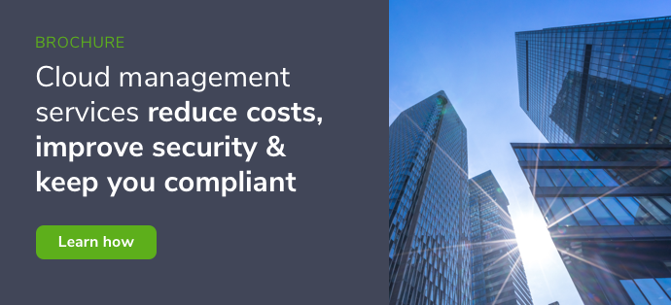Creating a comprehensive cloud tagging strategy helps you identify business needs, so you can effectively manage your cloud. But what exactly is cloud tagging and how can you get started?
What Are Cloud Tags?
Tags are metadata labels made up of a combination of a key and values. You can tag cloud applications, resources, and more to easily organize and search through your cloud environment.
Cloud tags are unique as they’re only meaningful to you. To cloud providers, they’re simply strings of characters with zero semantic meaning. They’re entirely separate from your code architecture. By attaching tags to resources, you can easily filter through them based on the tags you used to keep them logically organized.
Your cloud tags must be made up of a key and value pairing. The ‘key’ acts as the tag’s category, while the ‘value’ is the description. For example, if a specific department of your business is using a cloud service, then that department is the ‘key’, while the values would be made up of the services within that department.
However, implementing tags without consistent naming conventions is virtually useless. A strict tagging policy with exact spelling, capitalization, and format is the key to consistency. Otherwise, you may end up with numerous tags for a single name, which can be confusing.
Tips for an Effective Cloud Tagging Strategy
Simply tagging your cloud applications and resources isn’t enough. To truly benefit, you need a tagging strategy tailored to your business needs, so it aligns with how you already use the cloud.
Identify and Communicate Business Needs
The first step to creating a strategy that works is to understand why your business needs cloud tagging and the benefits it brings. Including your stakeholders in the discussion gives you visibility into how to build a tagging system that works for everyone.
If your business has a cloud tagging system in place, you need to perform an audit on your existing system. Ensure the infrastructure you have already works for your team before proceeding any further.
Keep It Simple
If your business infrastructure is already complex, then keeping your initial strategy simple is vital to ensure you maximize the usefulness of the information you receive.
Start by selecting a few areas of your business where you want to understand your costs better and slowly build up your tag library over time. Make sure these processes remain simple as your business grows.
Define Your Tag Vocabulary
Once you’ve decided on the target areas of your business, you’re able to decide on the specific tags you want to use. These are some commonly used examples surrounding business and structure:
- Application Name
- Business Unit
- CreatedBy
- Environment
- Cost Center
- Service
- Product
It’s necessary to focus when building an effective cloud tagging strategy. Instead of just creating tags immediately, the way to get consistent results is by following the previous three steps outlined in this blog. By doing so, your cloud tags are more focused and have had input from the whole team. Inconsistency makes it harder to see what’s happening with your cloud usage.
Utilize a Cloud Cost Management Platform
Using a spreadsheet to manage and decode thousands of tagged resources isn't recommended. A cloud cost management platform enables you to process tags into actionable analysis, and certain platforms can compensate for typos and spelling variations to help keep tags organized. The earlier you involve a cloud cost management platform in your tagging process, the better.
Each cloud provider enables cloud tagging, but they operate in different ways. Depending on who your provider is, you’ll need to apply a slightly different method to tag your resources effectively.
How to Use the AWS Tag Editor Function
Amazon Web Service's Tag Editor allows you to add and edit tags of any resource in AWS. Once you've found resources to tag, you can use the editor to add, view, edit, or delete tags.
Finding resources to tag:
- Sign in to the AWS Management Console and select Resource Groups. Then, choose Tag Editor.
- (Optional step) Choose regions in which to search for resources. Your current region is selected as your default.
- Choose at least one resource type from the Resource Type drop-down. You can add or edit tags for up to 20 individual resource types at one time, or simply choose All Resource Types.
- When your query is ready, choose Search Resources. Results are then displayed in the Resource Search Results field.
It’s also possible to view tags of selected resources as well. Tag Editor shows you existing tags on selected resources that appear in your results query.
- In the results of your Find Resources to Tag query, select a number in the Total Tags column for any resource, to view the existing tags. Note: resources that have a dash in the Total Tags column don't have existing tags.
- View the existing tags in Resource Tags. This window can also be opened on the Manage Tags page.
You can also export your results findings to a comma-separated values (CSV) file to help you develop a tagging strategy for resources in your organization, or determine where there are overlaps or inconsistencies in cloud tagging across applications and resources.
- In the results of your query, choose Export Resources to CSV.
- When prompted by your browser, choose to open the CSV file or save it to a location that's convenient.
How to Tag Cloud Applications in Azure
When cloud tagging in Azure, there is a key and value tag limit of 15 per resource, and you can only tag resources that are recognized by Azure Resource Manager. It’s important to remember that while tag names aren't case-sensitive, tag values are.
- To view tags for a resource or group, look for existing tags in the overview. The list will be empty if no tags have been previously applied.
- Select Click Here to Add Tag.
- Add a name and value to the tag.
- Continue to add as many tags as you need. When finished, select Save.
- The tags are now displayed in the overview.
You can also assign tags in bulk on Azure:
- From the resources list, tick the checkboxes for the resources you want to assign to a tag.
- Select Assign Tags.
- Add names and values, then select Save.
How to Label in GCP
The Cloud Console can be used to add labels to a single project or multiple at once.
- Open the labels page in the Cloud Console.
- Choose the Select a project dropdown.
- Click + Add label to add a new entry. Enter the label key and value for each label you want to add.
- Click Save when finished.
To add labels to more than one project at once:
- Open the Manage Resources page in the Cloud Console.
- Select the organization and projects that you want to add labels to.
- In the Labels tab, click + Add labels and enter the label key and value for each one.
- Click Save when finished.
Once you've added labels, you can filter projects by typing the label key or value into the filter box.
Maximize Tag Effectiveness with Cass
To see the real benefits of tagging cloud applications, it’s important to work with an expert in the field. Partnering with a cloud management provider helps you to forge a clear strategy that works for you.
Cass has certified cloud experts that work alongside your organization to tackle the complexity behind maximizing your cloud usage, so you can manage your cloud with confidence.
Topics: Cloud Management Services


